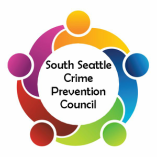School Safety Tips
As children spend many hours in school, it is important that you and they know how to keep safe on the way to school, while at school, and on the way from school. As reports of child and teen bullying increase, additional information about what to do about bullying may be found in the tab "Bullying" in the Don't Be A Victim section of our web site; please also review the "Stranger Danger" web page tab in the Community Safety section of this web site.
On The Way To School
Safety While In School
Safety During School Lock-Downs
School lock-downs are meant to limit school access and prevent a hazard by controlling/managing staff and students. A lock-down can be called by school officials, law enforcement agencies or other emergencies respondents; it can be called for a variety of reasons: weapons on the premises, intruders, police activity in or around the school, presence of contaminants or hazardous materials, and/or terrorist events. Parents/trusted adults must not attempt to come inside the school until the area has been secured by local law enforcement or cleared by administration.
Your child's school prepares its faculty, staff, and students for emergencies (such as fires and earthquakes) by conducting unannounced and pre-announced safety drills. As the parents and concerned adults in their lives, ask that your child's school has building evacuation procedures, a back-up communication system when telephone lines are compromised, and plenty of emergency/first aid kits on-hand. Parents/concerned adults should make sure that school offices have the most recent contact names and numbers on file; if a child needs to be picked up from school, make sure the school can contact you as easily as possible.
On The Way To School
Safety While In School
- Teach children to know and follow the school rules
- Teach children to stay on school grounds--they should never walk off-campus while school is in session
- Teach children to inform their teacher--before leaving the classroom--should they leave the classroom for any reason
- Teach your child to report bullying behavior s/he experiences or witnesses to a teacher, principal, or other staff person
- For school field trips, make sure your child has your contact/emergency information on paper and in her/his pocket
- Know the departure and arrival times, destination, number of adult staff/chaperones, and number of kids on field trips
- Teach your child to always have a "bathroom buddy" accompany her/him to the bathroom while on a field trip
- Make sure the field trip organizer has pre-selected a meeting spot in case a student gets separated from the group
Safety During School Lock-Downs
School lock-downs are meant to limit school access and prevent a hazard by controlling/managing staff and students. A lock-down can be called by school officials, law enforcement agencies or other emergencies respondents; it can be called for a variety of reasons: weapons on the premises, intruders, police activity in or around the school, presence of contaminants or hazardous materials, and/or terrorist events. Parents/trusted adults must not attempt to come inside the school until the area has been secured by local law enforcement or cleared by administration.
- Students and teachers must remain in classrooms; no one enters or exits a classroom until authorities call "Clear!"
- No one will be allowed to enter/leave the building; parents/trusted adults won't be able to pick up kids during a lock-down
- School staff ensures that all classrooms, doors, and windows are locked
- Teachers make sure children are out of hallways; children must be calm, safe and secure inside a locked classroom
- Teachers ensure classroom windows are shaded, lights dimmed or turned off
- Teachers keep attendance record of students to know who is present
- Teachers encourage students to seat themselves as far as possible from door(s) and windows
Your child's school prepares its faculty, staff, and students for emergencies (such as fires and earthquakes) by conducting unannounced and pre-announced safety drills. As the parents and concerned adults in their lives, ask that your child's school has building evacuation procedures, a back-up communication system when telephone lines are compromised, and plenty of emergency/first aid kits on-hand. Parents/concerned adults should make sure that school offices have the most recent contact names and numbers on file; if a child needs to be picked up from school, make sure the school can contact you as easily as possible.
- Teach children to calmly listen to their teacher and follow their teacher's directions
- Teach children to stay away from windows and stay away from book shelves/furniture that may fall and injure them
- During earthquakes or earthquake drills, drop down under a table head first and hold table legs until quake/drill is over
- During fire drills, line up quickly and quietly; exit the building per the teacher's instructions
- Children should be aware that a teacher should always have a first aid kit in hand during emergency events/drills
- Children should be aware that a teacher should always have a student name log during emergency events/drills
- Train children to remain calm if an actual fire or earthquake happens at school--conduct your own drills at home
- Assure an injured child that s/he will receive prompt and proper medical attention
